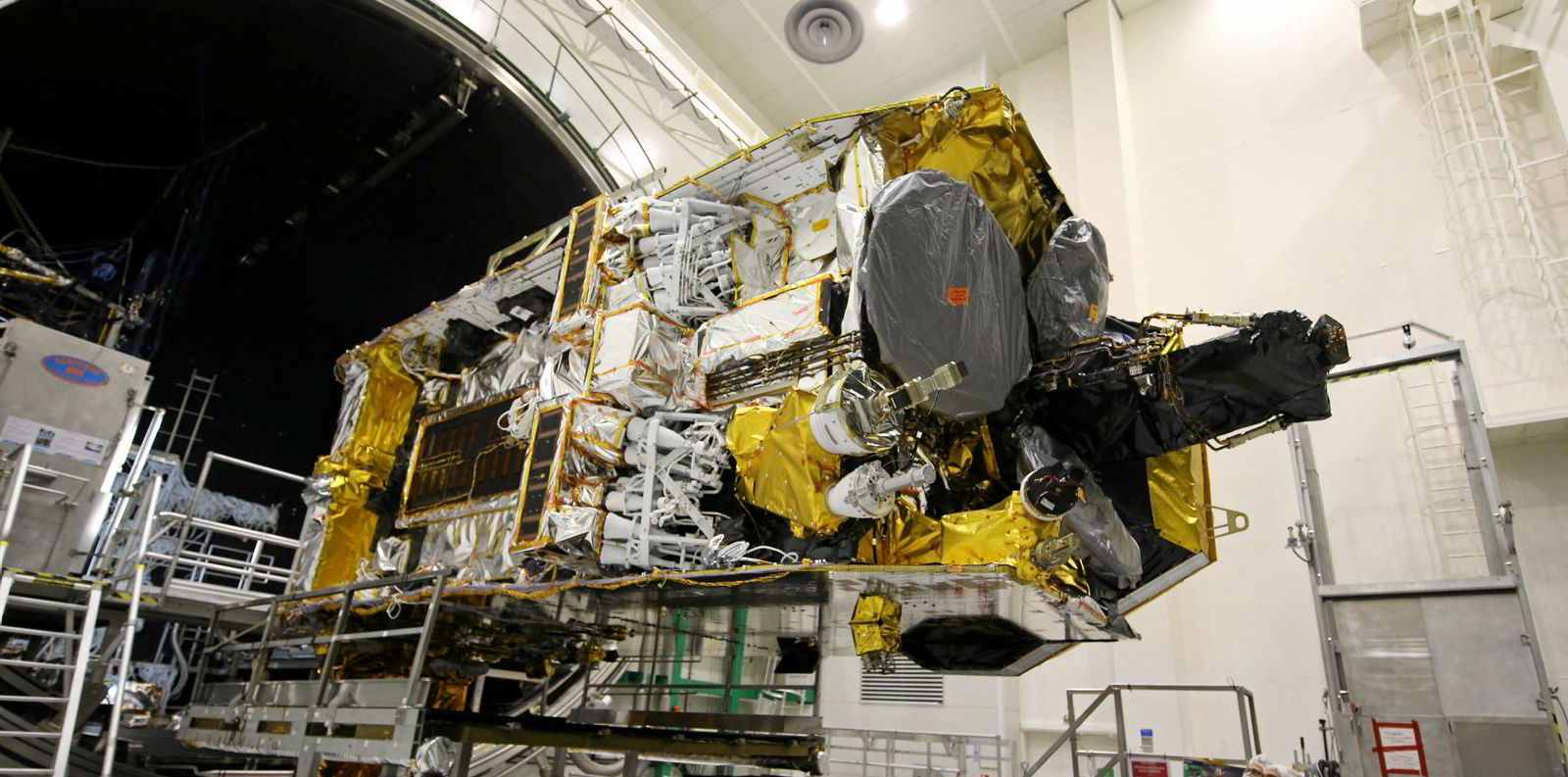Vessels in deepsea areas of the Pacific were briefly unable to use Inmarsat satellite communication to send and receive distress signals, navigational warnings, man-overboard alerts or weather warnings this week.
Inmarsat’s I-4 F1 satellite, which provides L-band services in East Asia and the Pacific, experienced a hardware failure that began on Sunday and was resolved on Tuesday.
Services provided by the satellite were fully recovered within hours. Inmarsat was able to immediately deploy its back-up system for Inmarsat C, which provides services for the Global Maritime Distress & Safety System (GMDSS) — the automated global emergency signal and communication system for ships.
But the tech failure highlights vulnerabilities in the wider infrastructure for the global distress signal system.
Inmarsat and its rival Iridium Communications are the only two certified satellite providers for the GMDSS, which is a requirement of the International Maritime Organization’s International Convention for the Safety of Life at Sea (Solas). All ships operating in international waters must have satellite and radio communications on board for sending and receiving GMDSS signals.
“Some 1.6m seafarers depend on us for a communications lifeline that is reliable and unaffected by bad weather,” Inmarsat states on its website.
Inmarsat’s SafetyNet and RescueNet systems are used to send and receive Enhanced Group Call (EGC) distress messages, search-and-rescue information and safety warnings to vessels and mariners within the navigational area.
The satellite outage meant the SafetyNet reporting system was automatically transferred to a back-up system, SafetyNet II, but ECG messages were delayed for some users. These delays persisted until Tuesday, according to Navarea warnings for the Pacific seen by TradeWinds.
Vessels closer to shore would still have been able to receive Navtex (navigational telex) messages during this time.
Sources told TradeWinds that EGC reporting functionality appeared to be back to normal as of Wednesday.
Inmarsat told TradeWinds the satellite had experienced a loss of power that led to an automatic suspension of its services.
“This was an exceptional incident and a highly complex one,” a spokesperson said.
The I-4 F1 satellite covers a huge area, ranging roughly from west India across the Pacific to the tip of Alaska.
Inmarsat said the hardware outage on the I-4 F1 satellite began at 9.14pm GMT on Sunday.
“[The company] immediately instigated its recovery procedures,” it said on Tuesday.
TradeWinds understands that signals from the satellite came back online around 5.30pm GMT on Tuesday.
“We remain fully confident in our satellite infrastructure and we have contingency arrangements in place,” an Inmarsat spokesperson told TradeWinds.
“Inmarsat can confirm that immediately following the incident, it instigated the process to transfer maritime safety services, in line with the IMSO [International Mobile Satellite Organization] approved operational process, to a contingency satellite. That process was completed successfully.”
The failure also affected satellite phone and internet connectivity on board vessels. Inmarsat confirmed that its Broadband Global Area Network, which includes its SwiftBroadband, FleetBroadband services, have since been restored.
Ageing infrastructure
A possible explanation for the outage could be the age of the satellite itself.
The I-4 F1 is more than four years past the end of its 13-year expected life. It was launched in 2005 and is due to replaced in December.

“We have existing plans in place for new L-band satellites. Many of the services currently delivered by I-4 F1 will be moved to Inmarsat’s new, high-performance I6-F1 satellite in the coming months,” the spokesperson told TradeWinds.
Most of Inmarsat’s other L-band satellites are old too, the oldest being the third-generation satellite for the east Atlantic Ocean region (the I-3 F5). It was launched in 1998 with an expected lifespan of 13 years and is still operational.
All the company’s other L-band satellites are slightly newer, fourth-generation units. The I-4 F2, which covers Europe, Africa and the Indian Ocean, is four years past its expected lifespan.
The other, the I-4 F3, reaches the end of its usual lifespan this year. Its coverage straddles the Americas and includes the western Pacific and eastern Atlantic.
Inmarsat has launched two sixth-generation, L-band satellites in the past two years: the I-6 F1 in 2021 and the I-6 F2 in February this year.
These will be joined in 2027 by three new Inmarsat-8 micro L-band satellites, “specifically designed to enhance safety service back-up for L-band customers”, Inmarsat said on Tuesday.
It said none of its other L-band satellites have been affected by the outage.
The problem appears to be isolated to Inmarsat. Satellites operated by Iridium are understood to be functioning normally.
Iridium Communications has 66 L-band satellites in low-Earth orbit. Inmarsat’s six L-band satellites are in equatorial geosynchronous orbit.
This article has been amended to clarify the technical failure of the satellite hardware and the very brief outage in service from the unit.





